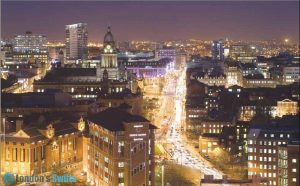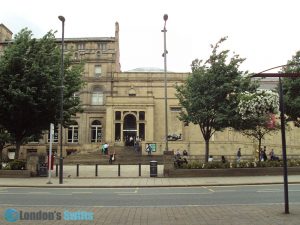 The city of Leeds lies in the northern parts of England in the metropolitan county of West Yorkshire. The city is the largest legal and financial centre of the United Kingdom, after London and is Britain’s fourth-most populous urban area with an estimate population of 2.4 million people (metropolitan area included).
The city of Leeds lies in the northern parts of England in the metropolitan county of West Yorkshire. The city is the largest legal and financial centre of the United Kingdom, after London and is Britain’s fourth-most populous urban area with an estimate population of 2.4 million people (metropolitan area included).
However, experts believe that the number will grow in the upcoming years, as more and more people are relocating to the city by using professional removal services to Leeds by London Swifts. The phenomenon is due to the city’s diverse economy and rapidly developing private sector, which offers amazing career opportunities.
Leeds has plenty of fascinating places
Aside of being a major employment centre and a financial hub, Leeds is also among the most visited British cities and the main reasons for that are its numerous landmarks, such as:
- Royal Armouries Museum – Opened in 1996, this exhibition venue is part of the Royal Armouries family, which include the Fort Nelson, the Tower of London and several permanent galleries in the Frazier History Museum in Louisville, USA. The museum displays the National Collection of Arms and Armour and is housed in a newly built edifice that sits at the Leeds Dock. The gallery’s entry is free but some supplementary attractions are charged for.
- Leeds Town Hall – Considered by many to be the most beautiful building in the city, the Leeds Town Hall was designed by renowned British architect, Cuthbert Brodrick and constructed from 1853 to 1858. Queen Victoria officially opened the edifice on the 7th of September 1858 and it spans over an area of 5.600 square y Its main feature is its tower, which is one of the tallest structures in Leeds with a height of 225 feet. The building is listed as Grade I edifice.
- Kirkstall Abbey – The ruins of this Cistercian monastery are situated in the suburb of Kirkstall. The abbey was founded during the mid-12th century and was abolished a little less than four centuries later in 1538, due to the Dissolution of Monasteries by Henry VIII. The ruins are open to the public and are praised for their picturesque character. During the years, several renowned artists such as Thomas Girtin, John Sell Cotman and J.M.W. Turner have painted Kirkstall Abbey.
 Harewood House – Located in the village of Harewood in close proximity to Leeds, this majestic mansion is one of the Treasure House of England. Designed by John Carr and Robert Adam and constructed during the second half of the 18th century for Edwin Lascelles, 1st Baron Harewood, the mansion is also listed as a Grade I building. Its grounds, which are as magnificent spread over 1.000 acres were created by Lancelot Brown. The house was the subject of major remodelling project during the 1840s commissioned by Henry Lascelles, 3rd Earl of Harewood and conducted by Sir Charles Barry.
Harewood House – Located in the village of Harewood in close proximity to Leeds, this majestic mansion is one of the Treasure House of England. Designed by John Carr and Robert Adam and constructed during the second half of the 18th century for Edwin Lascelles, 1st Baron Harewood, the mansion is also listed as a Grade I building. Its grounds, which are as magnificent spread over 1.000 acres were created by Lancelot Brown. The house was the subject of major remodelling project during the 1840s commissioned by Henry Lascelles, 3rd Earl of Harewood and conducted by Sir Charles Barry.- Leeds Art Gallery – This museum was founded in 1888 and is dedicated to British art. Local authorities identify the gallery’s 20th century collection of British art as an assemblage of national importance. The Leeds Art Gallery was close in 2015 for renovation jobs. It was reopened in 2017 and is currently one of the most visited landmarks in the city.
